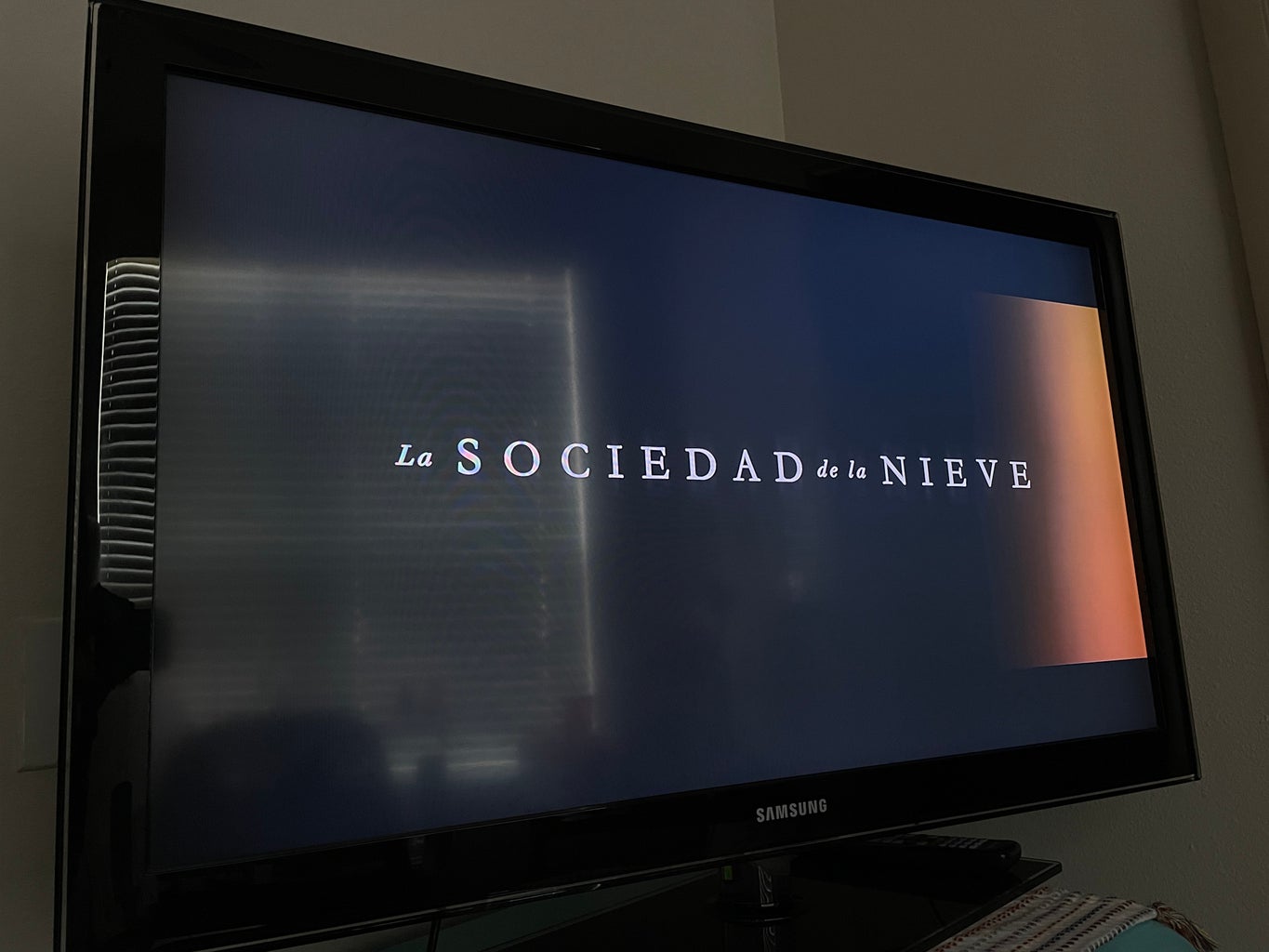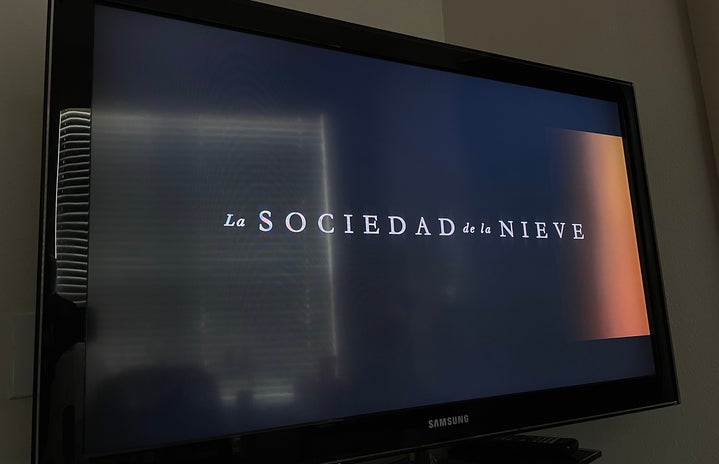
Today I wanted to cover a record-breaking film that causes a whirlwind of emotions and existential questions for its watchers. “The Society of the Snow”, directed by J.A. Bayona, hit Netflix’s top 10 in 93 different countries after its debut on the streaming platform. Not to mention the movie has been nominated for 2 Oscars, 13 Goya awards, 2 Critics Choice, a Golden Globe, and the list goes on.
Before I got to watch the film myself, I didn’t know the details of the tragic accident. This film recounts the compelling events of the Andes plane crash, also recognized as the “Tragedy of the Andes” or the “Miracle of the Andes,” which took place on October 13, 1972. Uruguayan Air Force Flight 571, en route from Montevideo, Uruguay, to Santiago, Chile, crashed in the Andes Mountains in Argentina, carrying 45 passengers, including members of a Uruguayan rugby team. Stranded in the mountains, the survivors endured severe conditions such as freezing temperatures and high altitudes. As days passed without rescue, they were compelled to take drastic measures to survive, all the while confronting life-threatening challenges. This persisted for 72 days until a rescue mission finally reached them. Out of the 45 passengers, only 16 survived, making it one of the most harrowing survival stories in history.
Even though I didn’t understand the hype it was getting all over the internet, after watching I discovered why. I’m writing this article to explain why it deserves the recognition it’s getting, and if you haven’t watched the film I’d stop reading if you don’t want any spoilers.
What is so special about this movie is the cast and Bayona’s ability to take something so tragic and horrifying yet drive the focus on the emotions the characters felt. While validating their suffering and terror, a light was shed on humanity, friendship, perseverance, teamwork, and life. What I appreciate about the film is that it represented the survivors and the stories about the victims’ roles and memories were beautifully told. For example, Bayona’s choice to make Numa Turcatti (played by Enzo Vogrincic) the narrator of the movie even though we find out later that he passes away, was a conscious decision to highlight that his role was key to guaranteeing the survival of his friends. In the film following Numa’s death, the character Gustavo Zerbino reads a note that translates: “There is no greater love than the one who gave his life for his friends.” The actual survivor, Zerbino said in an interview: “He not only wrote this message but carried it out. Numa’s death served to make the rest of the group realize that they would die if he continued there, so he was a catalyst.” Numa sadly passed away 10 days before the survivors were rescued and was chosen to narrate the movie to honor him as he was the last to die in the Andes.
To be able to write this article with the attention it deserves, I started to do my research. I watched interviews, reviews, and “fun fact videos” and read up on articles. There was one particular interview hosted by Netflix that stuck out to me. The survivors and families of the victims said that the movie allowed them to connect with the deceased, many of whom are friends and family. An instance of this is Male Methol, who was only 3 ½ years old when her mother, Liliana Methol died in the avalanche. She said in that interview that the movie “helped to give form to that mother she never had.” This adds to another beautiful aspect of the film: the survivors and those close to the victims were touched and moved by the film. They truly feel that they were able to connect with the positive aspects of the tragedy, and it showcases an array of wisdom-filled lessons. Unlike previous films, there have been many like “Survive!” (1976) that focused on the horror of the tragedy and contributed to the sensationalism of the cannibalism in the media following the incident, and “Alive!” (1993) that was more action/adventure focused; this film made them feel truly seen. Emphasis on how many times I used the word “feel”, and how important emotion is in the movie.
For a long time after the accident, there was a wave of sensationalism surrounding the cannibalism that took place in the Andes, raising moral and ethical questions in the media. The survivors had a hard time adjusting to their normal life after the accident because of the way they were portrayed in the media for the things they had to do to survive. The media villainized them, showing little understanding and humanity for the situation they found themselves in. The “Society of the Snow” did quite the opposite for the survivors, and helped the public be more conscious of the difficult decisions that had to be made to survive. Another beautiful detail about the making of the movie was that each of the actors spent quality time and formed a special relationship with the person they were playing before filming. Survivor Roberto Canessa said in his interview with Matias Recalt, the actor playing him, that “He could be like a son or a grandson to him, he reminds him of when he was young”. In Enzo’s case, he was able to portray Numa’s character flawlessly through spending time with Numa’s friends, family, and the other survivors who spoke so highly of him. In an interview with Tom Holland, who has a strong relation to director J.A. Bayona for his role in the 2012 film “The Impossible,” survivor Roberto Canessa claimed that “Society of the Snow” was his favorite movie that he’s seen in his life.
That is a synopsis of why I believe the film is so special and has gotten the recognition it deserves. I have talked to friends and family who have watched the film, and we all share that the film was so impactful that you don’t feel the same afterward. Add that to the list of Roman Empires, because it is something you will recount for a while and will never forget.


